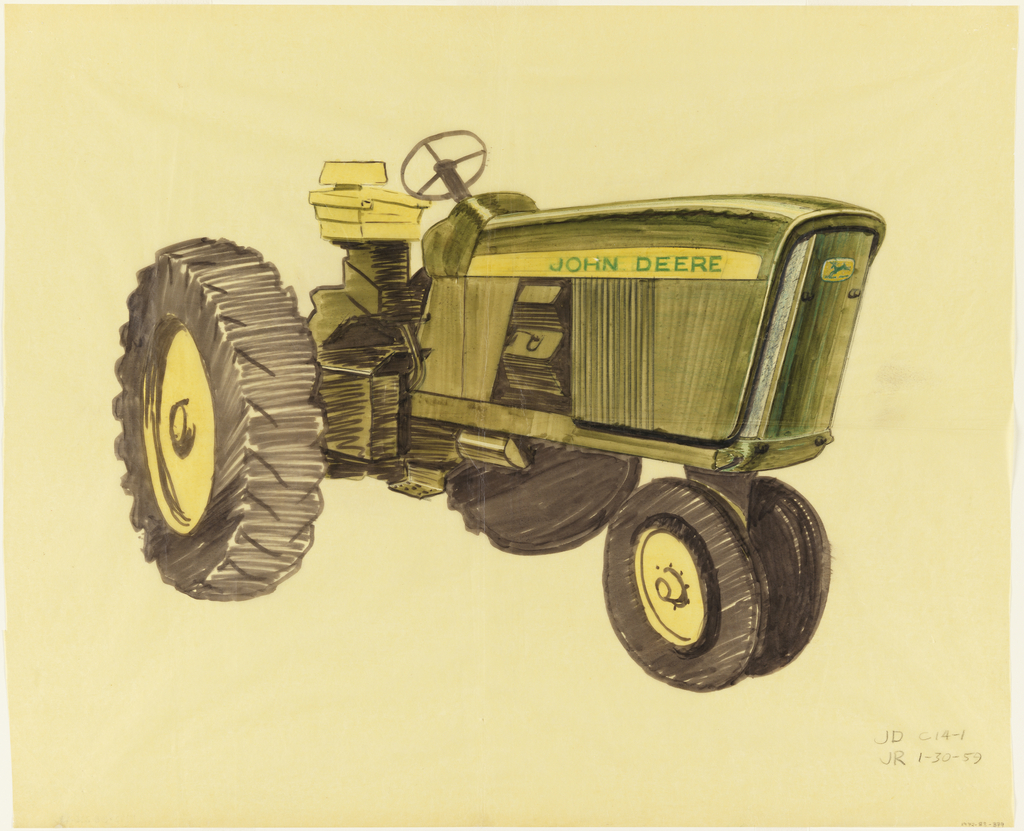In 1937, Deere & Company’s engineers decided that, while they knew how to create dependable and efficient tractors, what they needed was a more cohesive appearance that projected these qualities. They entered into consultations with industrial designer Henry Dreyfuss, which led to a more unified design of the tractor and all its different models.
Dreyfuss had come into prominence in the 1930s from a background in theatrical design and distinguished himself as a designer for mass production by favoring practicality over art deco and streamlined styling. In the 1950s, he brought the use of anthropometrics—the study of human dimensions and capabilities—into his practice, paving the way for others.
In restyling the Model B, Dreyfuss and the engineers combined the hood and radiator cover and grouped components rather than simply covering them up. Later, Dreyfuss created a “corrugated” radiator shield that farmers could clean with their gloved hands—a change that resulted from watching how people actually worked. By the mid-1950s, Deere & Co. management decided to completely overhaul their existing line. Dreyfuss’s firm was a fundamental force in shaping the “New Generation of Power” tractors (1960). In addition to changes in external appearance, materials, and color schemes, the firm helped develop a more versatile seat that suited a wide range of users. The new seat became a vital selling point to farmers, who often spent the better part of their day aboard these machines.
